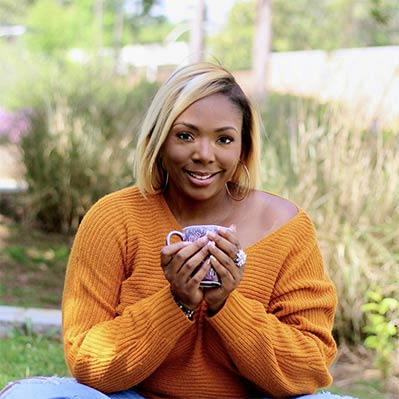How to Build a Wardrobe for the Differently Abled?
Building a Wardrobe for differently abled individuals goes beyond just choosing clothes. It’s about creating a collection of garments that are not only functional and comfortable but also enhance the wearer’s independence and confidence. This guide explores the essential aspects of designing an adaptive Wardrobe, focusing on the unique needs of differently abled individuals.
Understanding Clothing for Differently Abled Individuals
Carefully choosing clothing for differently abled individuals is a crucial factor in everyday comfort and self-expression. Adaptive clothing addresses specific physical and cognitive conditions such as limited mobility, sensory sensitivities, and the need for easy dressing and undressing. The right clothing can significantly impact the lives of differently abled individuals, offering them greater independence and participation in various activities. Certain clothing choices can be the key resource to unlock independence and dignity for many differently abled individuals.
What to Look for When Creating an Adaptive Wardrobe?
Creating an adaptive Wardrobe requires careful consideration of the unique needs of differently abled individuals. When looking for adaptive clothing, first think through what problems and situations you want the clothes to solve. Here’s what to look for:
Knowledge About Types of Adaptive Clothing
Adaptive clothing encompasses a wide range of garments designed to cater to various needs. This includes clothes with innovative closures that may include Velcro, magnets, zippers or snaps. Elastic waists, open-back designs, and garments with adjustable features and specialty fabric are key features of adaptive clothes. For wheelchair users, there are specially designed pants and dresses that are ergonomically designed to both feel better in a seated position and look better while seated. Magnetic buttons and zippers are ideal for those with limited hand dexterity. There are even clothes that make assisted dressing easier for those individuals who need help with dressing. Other adaptive clothes may accommodate extra access points for medical devices, incontinence products, or for doctor’s visits.
Comfortable Fabric for Limited Mobility
For individuals with limited mobility, especially those in wheelchairs, comfort is especially key. Fabrics should be soft, stretchable, and non-irritating to the skin. Avoiding hard seams and tags that can cause discomfort or pressure sores is essential. Adaptive apparel brand Joe & Bella, for example, only uses carefully sourced fabric that is appropriate for individuals with skin sensitivities. Their fabric is both breathable and durable to ensure the clothes can be worn often and washed easily.
Ease of Use for Caregivers
Clothing that can be easily managed by caregivers is vital. Think about features like snap closures, wrap-around designs, and open-back garments, which make dressing and undressing less physically demanding for both the Caregiver and the individual.
Many caregivers report that the dressing process is a twice-daily routine that’s often full of tension and frustration, negatively impacting their relationship with their care recipient. Adaptive clothing can help make dressing easier, quicker, safer and simpler, for both the Caregiver and care recipient.
Easy to Manage
For people with limited mobility or paralysis, ease of use is paramount. Garments with side zippers, snap buttons, and magnetic buttons enable these individuals to dress independently, fostering a sense of self-reliance. Joe & Bella positions side zippers and snaps on their pants to avoid pressure points for comfort while locating them in an easy-to grasp position. Long zipper pulls are easy to grab. Joe & Bella’s Everyday Magnetic Button Down is a wonderful option for those with limited mobility; thanks to hidden magnets behind the buttons, this shirt can be easily secured with just one hand, even with limited finger dexterity.
Consider Incontinence
Incontinence is common among differently abled individuals. Adaptive clothing for incontinence includes features like waterproof fabrics and discreet openings, providing practical solutions while maintaining dignity and comfort. Joe & Bella’s CareZips® adaptive pants for men and CareZips® adaptive pants for women are designed to make accessing incontinence products easier and more dignified. These pants include a patented inseam zipper that opens from the inside of one knee to the other. They’re also designed to hide any appearance of incontinence products, giving the wearer the confidence they deserve.
Loose Fitting Clothes to Hide Medical Devices
Many differently abled people rely on medical devices such as urinary catheters and ostomy bags. Adaptive clothing should be designed to conceal these devices discreetly, with extra room or special pockets so as to ensure comfort and privacy.
Clothes that Encourage Independence and Confidence
Adaptive clothing should not only be functional, but also fashionable, encouraging independence while boosting confidence. Garments with easy-to-use features like magnetic buttons, featured, for example, in Joe & Bella’s Everyday Magnetic Button-Down Shirt, empowers individuals, enhancing their self-esteem and willingness to engage socially.
Where can you get Adaptive Clothing for Disabled Individuals?
One notable provider of adaptive clothing is Joe & Bella. They offer a range of adaptive clothing options designed to meet the needs of disabled individuals. Their collection includes tops and bottoms for men and women with accessible features, comfortable fabrics, and stylish designs that cater to both functionality and Fashion.
Conclusion
Building an adaptive Wardrobe for differently abled individuals requires understanding their unique needs and choosing clothing that offers comfort, ease of use, and independence. The right clothing can significantly enhance the quality of life for differently abled individuals, providing them with the freedom to express themselves and participate actively in their communities. Selecting the appropriate garments can help make their daily lives more comfortable and dignified. And, contemporary adaptive-apparel brands like Joe & Bella offer premium styles that look and feel like clothes that people have always worn.

























